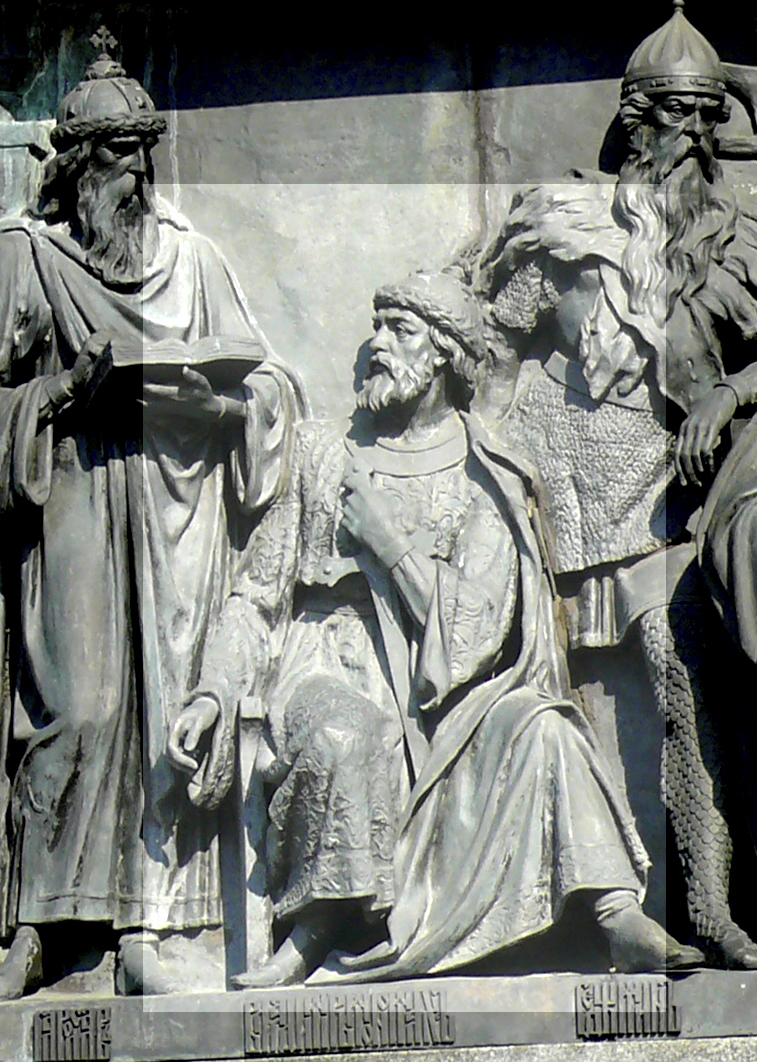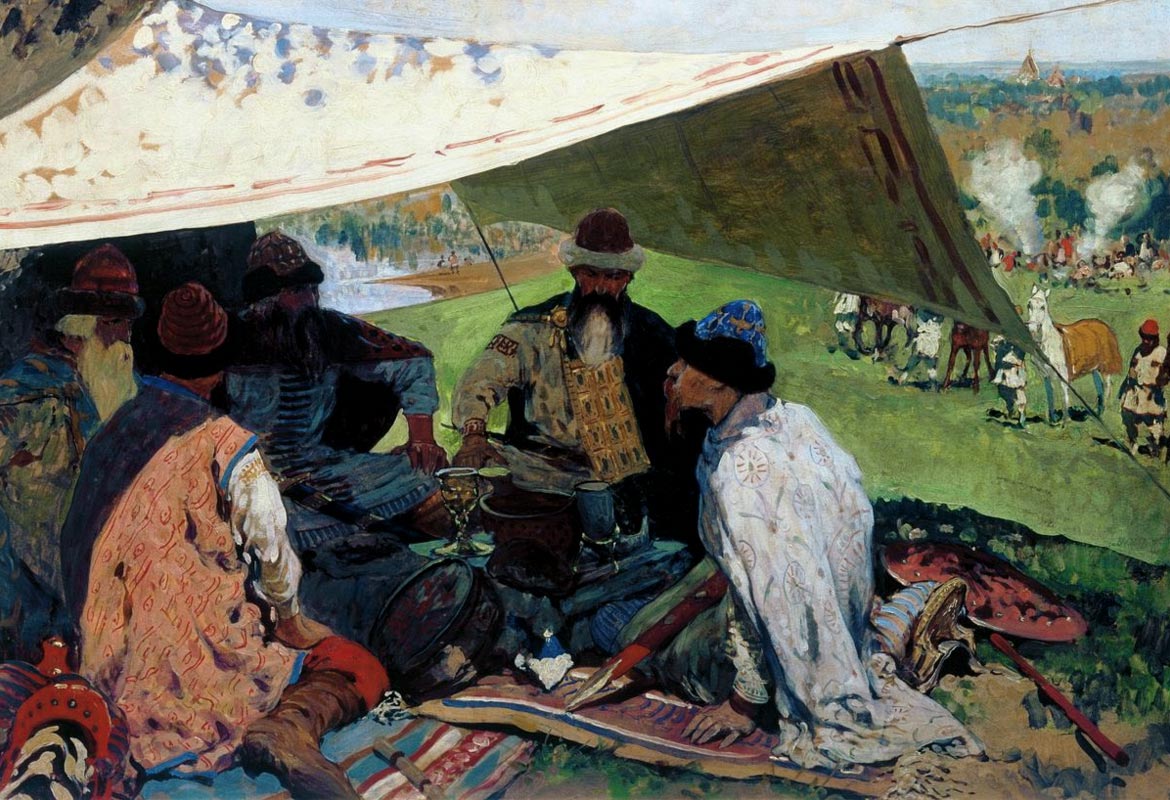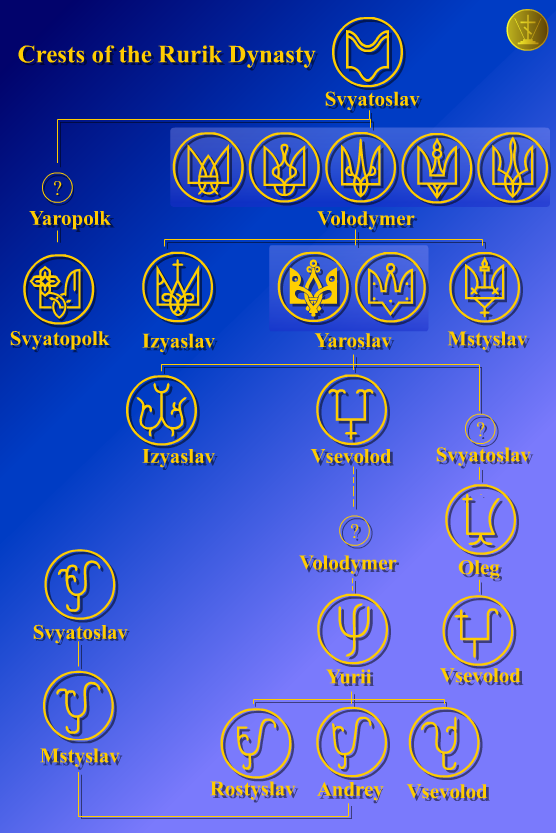|
Rostislav Vsevolodovich
Rostislav Vsevolodovich (russian: Ростислав Всеволодович) (c. 1070–1093) was the Prince of Pereyaslavl (1078–1093), son of Vsevolod I of Kiev, and half brother of Vladimir Monomakh. He fought at Stugna river against the Cumans The Cumans (or Kumans), also known as Polovtsians or Polovtsy (plural only, from the Russian exonym ), were a Turkic nomadic people comprising the western branch of the Cuman–Kipchak confederation. After the Mongol invasion (1237), many so ... and drowned while fleeing the battle.Basil Dmytryshyn, ''Medieval Russia: A sourcebook 850-1700'', (Academic International Press, 2000), 60. Notes Rurik dynasty 1070s births 1093 deaths Eastern Orthodox monarchs Princes of Pereyaslavl 11th-century princes in Kievan Rus' {{Ukraine-hist-stub ... [...More Info...] [...Related Items...] OR: [Wikipedia] [Google] [Baidu] |
Prince Of Pereyaslavl
The Prince of Pereiaslavl was the ''kniaz'' (the ruler or sub-ruler) of the Rus Principality of Pereiaslavl, a lordship based on the city of Pereiaslavl on the Trubezh river and straddling extensive territory to the east in what are now parts of Ukraine. It lay on Rus civilization's southern frontier with the steppe. The principality emerges was apportioned as the inheritance of Vsevolod I of Kiev(Kyiv, son of Yaroslav the Wise; his brother Sviatoslav received Chernigov, while Smolensk went to Viacheslav and Volodymyr to Igor; this ladder of succession is related to the seniority order mentioned above. Vsevolod's appanage included the northern lands of Rostov and the lightly colonised north-eastern zone of Rus (see Vladimir-Suzdal). The ''Primary Chronicle'' recorded that in 988 Vladimir had assigned the northern lands (later associated with Pereyaslavl) to Yaroslav. The town was destroyed by the Mongols in March 1239, the first of the great Rus cities to fall. Certainly from ... [...More Info...] [...Related Items...] OR: [Wikipedia] [Google] [Baidu] |
Vladimir II Monomakh
Vladimir II Monomakh (Old East Slavic: Володимѣръ Мономахъ, ''Volodiměrŭ Monomakhŭ''; uk, Володимир Мономах, translit=Volodymyr Monomakh; russian: Владимир Мономах; Christian name: ''Vasiliy'', ''Vasyl'', or '' Basileios'') (26 May 1053 – 19 May 1125) reigned as Grand Prince of the Medieval Rus' from 1113 to 1125. He is considered a saint in the Eastern Orthodox Church and is celebrated on May 6. Family He was the son of Vsevolod I (married in 1046) and a relative of Byzantine emperor Constantine IX Monomachos, from whom Vladimir obtained his sobriquet. Contemporary Byzantine naming practice allowed the adoption of a maternal surname if the mother's family was perceived to be of a more exalted origin than that of the father. Reign In his famous ''Instruction'' (also known as ''The Testament'') to his own children, Monomakh mentions that he conducted 83 military campaigns and 19 times made peace with the Polovtsi. At ... [...More Info...] [...Related Items...] OR: [Wikipedia] [Google] [Baidu] |
Rurik Dynasty
The Rurik dynasty ( be, Ру́рыкавічы, Rúrykavichy; russian: Рю́риковичи, Ryúrikovichi, ; uk, Рю́риковичі, Riúrykovychi, ; literally "sons/scions of Rurik"), also known as the Rurikid dynasty or Rurikids, was a noble lineage founded by the Varangian prince Rurik, who established himself in Novgorod around the year AD 862. The Rurikids were the ruling dynasty of Kievan Rus' (after the conquest of Kiev by Oleg of Novgorod in 882) before it finally disintegrated in the mid-13th century, as well as the successor Rus' principalities and Rus' prince republics of Novgorod, Pskov, Vladimir-Suzdal, Ryazan, Smolensk, Galicia-Volhynia (after 1199), Chernigov, and the Grand Duchy of Moscow (from 1263). Following the disintegration of Kievan Rus', the most powerful state to eventually arise was the Grand Duchy of Moscow, initially a part of Vladimir-Suzdal, which, along with the Novgorod Republic, established the basis of the modern Russ ... [...More Info...] [...Related Items...] OR: [Wikipedia] [Google] [Baidu] |
Vsevolod I Of Kiev
Vsevolod I Yaroslavich ( Russian: Всеволод I Ярославич, Ukrainian: Всеволод I Ярославич, Old Norse: Vissivald) (c. 1030 – 13 April 1093), ruled as Grand Prince of Kiev from 1078 until his death. Early life He was the fifth and favourite son of Yaroslav I the Wise by Ingigerd Olafsdottir. He was born around 1030. On his seal from his last years, he was named "Andrei Vsevolodu" in Greek, implying that his baptismal name was Andrew. To back up an armistice signed with the Byzantine Emperor Constantine IX Monomachos in 1046, his father married Vsevolod to a Byzantine princess, who according to tradition was named Anastasia or Maria. That the couple's son Vladimir Monomakh bore the family name of the Byzantine emperor suggests she was a member of his close family, but no contemporary evidence attests to a specific relationship and accounts of the Emperor give him no such daughter. Upon his father's death in 1054, he received in appanage ... [...More Info...] [...Related Items...] OR: [Wikipedia] [Google] [Baidu] |
Anna Polovetskaya
Anna Polovetskaya (died 1111), was a Princess of Kyiv by marriage to Vsevolod I of Kiev. She was the daughter of the Cuman khan. She married Vsevolod I in 1068. In connection to the wedding, she converted from her original faith, Tengrism, to Christianity, and was given the name Anna. When she was widowed in 1093, she stayed in Kyiv and was regarded with great respect and reverence. In 1097, she was asked to act as a mediator between her warring stepsons, and managed to secure peace and a resolution of the conflict. Her daughter, Eupraxia, became Holy Roman Empress when she married Henry IV, Holy Roman Emperor Henry IV (german: Heinrich IV; 11 November 1050 – 7 August 1106) was Holy Roman Emperor from 1084 to 1105, King of Germany from 1054 to 1105, King of Italy and Burgundy from 1056 to 1105, and Duke of Bavaria from 1052 to 1054. He was the ..., in 1089. References * Филиповский, Ефрем. Краткое историческое и хроноло� ... [...More Info...] [...Related Items...] OR: [Wikipedia] [Google] [Baidu] |
Vladimir Monomakh
Vladimir II Monomakh (Old East Slavic: Володимѣръ Мономахъ, ''Volodiměrŭ Monomakhŭ''; uk, Володимир Мономах, translit=Volodymyr Monomakh; russian: Владимир Мономах; Christian name: ''Vasiliy'', ''Vasyl'', or '' Basileios'') (26 May 1053 – 19 May 1125) reigned as Grand Prince of the Medieval Rus' from 1113 to 1125. He is considered a saint in the Eastern Orthodox Church and is celebrated on May 6. Family He was the son of Vsevolod I (married in 1046) and a relative of Byzantine emperor Constantine IX Monomachos, from whom Vladimir obtained his sobriquet. Contemporary Byzantine naming practice allowed the adoption of a maternal surname if the mother's family was perceived to be of a more exalted origin than that of the father. Reign In his famous ''Instruction'' (also known as ''The Testament'') to his own children, Monomakh mentions that he conducted 83 military campaigns and 19 times made peace with the Polovtsi. At ... [...More Info...] [...Related Items...] OR: [Wikipedia] [Google] [Baidu] |
Battle Of The Stugna River
The Battle of the Stuhna River (sometimes written as Stugna River; 26 May 1093) was fought between the princes of Kievan Rus', Sviatopolk II of Kiev, Vladimir II Monomakh of Chernigov, and Rostislav Vsevolodovich of Pereyaslavl against the nomadic Cumans. The Kievan forces were defeated. Background The Cumans raided Rus' soon after the death of Vsevolod and sought to buy peace with the new great prince, Sviatopolk. However Sviatopolk incarcerated the Cumans' ambassadors, and the Cumans came in force to attack Kiev. Facing an enemy army of eight thousand, Sviatopolk took the advice of counsel and called for help from Vladimir Monomakh, prince of Chernigov. Vladimir came with his troops and also called upon his only brother, Rostislav of Pereyaslav. Battle A union of Kievan princes against Cumans was achieved, and Sviatopolk released the ambassadors of Cumans. The troops of the three princes joined together and set out for the city of Trepol'. Approaching the Stuhna River, th ... [...More Info...] [...Related Items...] OR: [Wikipedia] [Google] [Baidu] |
Cumans
The Cumans (or Kumans), also known as Polovtsians or Polovtsy (plural only, from the Russian exonym ), were a Turkic nomadic people comprising the western branch of the Cuman–Kipchak confederation. After the Mongol invasion (1237), many sought asylum in the Kingdom of Hungary, as many Cumans had settled in Hungary, the Second Bulgarian Empire playing an important role in the development of the state. Cumans played also an important role in (The Byzantine Empire, the Latin Empire, and the Nicaea Empire) Anatolia . Related to the Pecheneg, they inhabited a shifting area north of the Black Sea and along the Volga River known as Cumania, from which the Cuman–Kipchaks meddled in the politics of the Caucasus and the Khwarazmian Empire. The Cumans were fierce and formidable nomadic warriors of the Eurasian Steppe who exerted an enduring influence on the medieval Balkans. They were numerous, culturally sophisticated, and militarily powerful. Many eventually settled west ... [...More Info...] [...Related Items...] OR: [Wikipedia] [Google] [Baidu] |
Rurik Dynasty
The Rurik dynasty ( be, Ру́рыкавічы, Rúrykavichy; russian: Рю́риковичи, Ryúrikovichi, ; uk, Рю́риковичі, Riúrykovychi, ; literally "sons/scions of Rurik"), also known as the Rurikid dynasty or Rurikids, was a noble lineage founded by the Varangian prince Rurik, who established himself in Novgorod around the year AD 862. The Rurikids were the ruling dynasty of Kievan Rus' (after the conquest of Kiev by Oleg of Novgorod in 882) before it finally disintegrated in the mid-13th century, as well as the successor Rus' principalities and Rus' prince republics of Novgorod, Pskov, Vladimir-Suzdal, Ryazan, Smolensk, Galicia-Volhynia (after 1199), Chernigov, and the Grand Duchy of Moscow (from 1263). Following the disintegration of Kievan Rus', the most powerful state to eventually arise was the Grand Duchy of Moscow, initially a part of Vladimir-Suzdal, which, along with the Novgorod Republic, established the basis of the modern Russ ... [...More Info...] [...Related Items...] OR: [Wikipedia] [Google] [Baidu] |
1070s Births
1 (one, unit, unity) is a number representing a single or the only entity. 1 is also a numerical digit and represents a single unit of counting or measurement. For example, a line segment of ''unit length'' is a line segment of length 1. In conventions of sign where zero is considered neither positive nor negative, 1 is the first and smallest positive integer. It is also sometimes considered the first of the infinite sequence of natural numbers, followed by 2, although by other definitions 1 is the second natural number, following 0. The fundamental mathematical property of 1 is to be a multiplicative identity, meaning that any number multiplied by 1 equals the same number. Most if not all properties of 1 can be deduced from this. In advanced mathematics, a multiplicative identity is often denoted 1, even if it is not a number. 1 is by convention not considered a prime number; this was not universally accepted until the mid-20th century. Additionally, 1 is the ... [...More Info...] [...Related Items...] OR: [Wikipedia] [Google] [Baidu] |
1093 Deaths
1 (one, unit, unity) is a number representing a single or the only entity. 1 is also a numerical digit and represents a single unit of counting or measurement. For example, a line segment of ''unit length'' is a line segment of length 1. In conventions of sign where zero is considered neither positive nor negative, 1 is the first and smallest positive integer. It is also sometimes considered the first of the infinite sequence of natural numbers, followed by 2, although by other definitions 1 is the second natural number, following 0. The fundamental mathematical property of 1 is to be a multiplicative identity, meaning that any number multiplied by 1 equals the same number. Most if not all properties of 1 can be deduced from this. In advanced mathematics, a multiplicative identity is often denoted 1, even if it is not a number. 1 is by convention not considered a prime number; this was not universally accepted until the mid-20th century. Additionally, 1 is the s ... [...More Info...] [...Related Items...] OR: [Wikipedia] [Google] [Baidu] |
Eastern Orthodox Monarchs
Eastern may refer to: Transportation *China Eastern Airlines, a current Chinese airline based in Shanghai * Eastern Air, former name of Zambia Skyways *Eastern Air Lines, a defunct American airline that operated from 1926 to 1991 * Eastern Air Lines (2015), an American airline that began operations in 2015 * Eastern Airlines, LLC, previously Dynamic International Airways, a U.S. airline founded in 2010 *Eastern Airways, an English/British regional airline *Eastern Provincial Airways, a defunct Canadian airline that operated from 1949 to 1986 *Eastern Railway (other), various railroads * Eastern Avenue (other), various roads *Eastern Parkway (other), various parkways *Eastern Freeway, Melbourne, Australia *Eastern Freeway Mumbai, Mumbai, India *, a cargo liner in service 1946-65 Education *Eastern University (other) * Eastern College (other) Other uses * Eastern Broadcasting Limited, former name of Maritime Broadcasting System, Can ... [...More Info...] [...Related Items...] OR: [Wikipedia] [Google] [Baidu] |






